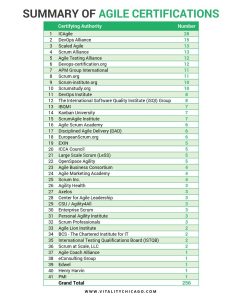
Increasing blog traffic is insanely important to businesses and content marketers. It is one of the concepts that comes up in the vast majority of conversations I have with clients.
“How do I increase traffic to my blog?”
“Is it really that important to increase traffic to my blog?”
Some variation of these questions comes up almost all of the time. In fact, I’ll make a bold statement here, every client I’ve talked to has asked me a question like that.
The good news is, most people I’ve been talking to have been blogging for at least 6 months. This gives us some data to play with when making future projections.
If someone doesn’t have any data at all I might recommend starting a content calendar that publishes blogs 5-8 times per month. Then we can revisit the data after about 6 months to see where we stand
Here’s what I mean when I say “see where we stand”.
Properly Analyzing a New Blog or Blogging Strategy
When a blog, or new strategy, is just starting up there’s a bit of a lull at first followed by a few spikes here and there. I’ve noticed that a lot of these spikes can be caused by improper, or missing filters configured in Google Analytics in the early stages of deployment. Next, there is ultimately an evening of low and high points. The best way to measure these trends starts with a logarithmic scale. I don’t recommend starting with an exponential trendline. At first, your blog is going to have some points of zero traffic and these figures make exponential trends impossible to map.

A key distinction that should be made here is that new blogs are going to have highly varied traffic trends. You might have zero visitors today, ten tomorrow, three the next day, and twenty-five on Friday.
With this in mind, you are not going to see high R-squared numbers at first, I promise. If you do, those figures are probably unreliable. Statistically speaking, there isn’t enough data for your regression analysis to be all that reliable.
Is There a Way to Overcome Low R-Squared Figures
This is the part of blog analysis that I find endlessly interesting.
If we combine a polynomial trendline we see a significantly different line. It’s still really far away from being R2=1 but it appears to follow the trends within the data. So we might assume that the trendline is also more reliable. Mehhh, not quite.

A polynomial trendline will basically always show an upward trend at the end, so let’s assume this projection is a little embellished. However, if we look at the peaks and valleys over time we see that the variance is reducing slowly. We notice less zero figures, and in the last month or two, we don’t see any.
Wrapping Human Psychology, Historic Events, and Regression Analysis Together
People are visiting this blog and human behavior can be hard to predict, therefore it’s okay to have lower R-Squared numbers. However, by factoring in events that happened within the last couple of months and the combination of the polynomial and logarithmic regression analysis we can make some accurate projections for the future.
Actual traffic is going to be somewhere between these two trendlines. Where they fall between these two trendlines is going to depend on historic events.
Was this blog syndicated or mentioned in the last two months? Each of these will powerfully impact the regression analysis.
If it was syndicated it will likely see a regular increase aligned with the trends at the end of the data set. This will bump up actual traffic increase to be closer to the polynomial line.
If the blog was linked to in a post on a well-known outlet the trend at the end probably won’t last for long and projections will fall closer to the logarithmic trendline.
Keep Track of Key Website and Blogging Events
Memorizing all of the events that will impact website traffic is impossible. It’s important that Google Analytics is annotated with impactful events. Then regression analysis can lean on events for context.
Forming context is key for projecting future traffic. Knowing why people do what they do is very powerful in traffic projections.
Look Forward to Exciting Traffic Analysis
So, as time goes by R-Squared figures will increase and zero figures will completely disappear (assuming regular blogging is maintained). When this happens you can experiment with exponential trendline analysis, power trendlines and use the line that has the highest R-Squared number.
Once you can use trendlines to determine predictable traffic you can align those figures with your click-through rates. Chances are, you’re marketing team is paying attention to blog posts that get the best click. Similarly to traffic trends, click-through rate trends can become more predictable over time.
After traffic and click-through figures become predictable you can couple this knowledge with landing page performance to conversion rates from blog traffic (clicks on a blog trailer CTA for example). This will enable marketers to predict conversion rates of blogging traffic.
To fully close the loop we can leverage tools like HubSpot to see the proportion of converted blogging traffic that became a customer. Crazy powerful information!
Bonus thought…
Creating a rewards program to generate qualified leads, and maybe even customers, can allow us to see the proportion of customer blogging traffic that resulted in closed-won referrals.
While it might sound far-off to achieve all of this, it’s possible with time. Think about it this way, is a company in business for a few months or several years? When trend tracking is performed this way all you need is time and strategy to generate opportunities like the ones mentioned in this post.
Happy analyticating!
Digital & Social Articles on Business 2 Community(48)
Report Post






